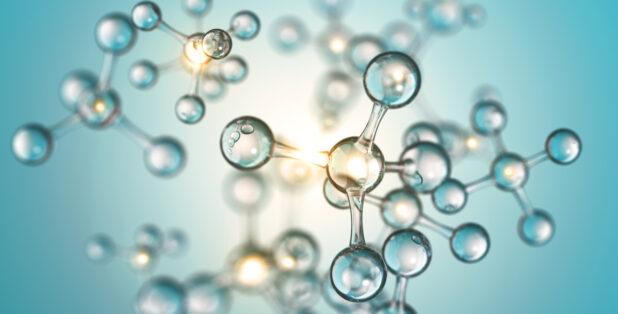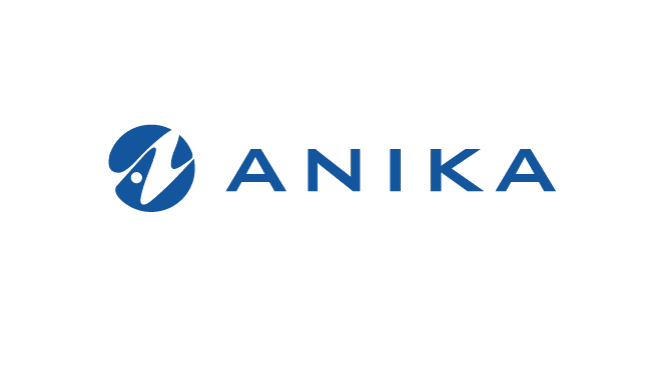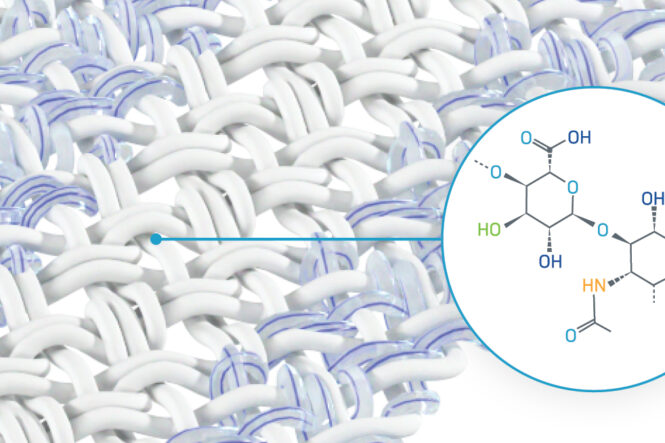In the realm of healing and health, a remarkable substance courses through our bodies, cushions our joints, and hydrates our skin. This substance is called hyaluronic acid (HA), also known as nature’s own moisturizer. While hyaluronic acid is commonly associated with skincare, fine lines, and anti-aging, its use has been explored across a wide range of applications including regenerative medicine in orthopedics1–4. For over 30 years, Anika has been harnessing the extraordinary properties of hyaluronic acid with the goal of restoring active living for people around the world.
What is Hyaluronic Acid?
Hyaluronic acid is a naturally occurring material in the body that is vital for proper joint health and tissue function. HA has a jelly-like consistency with characteristics similar to a sponge, giving it the remarkable capacity to attract and hold water molecules effortlessly — up to a thousand times its weight5.
HA consists of polymer chains, which essentially creates a supportive structure throughout your joints and body.4 This framework is crucial as it fosters tissue development and regeneration.4 Tissue regeneration plays a vital role in the healing processes, making HA significant in medical treatments.
Hyaluronic Acid’s Well-Known Benefits
Hyaluronic acid is naturally found in almost every part of the body – inside and out. It has been extensively studied in the cosmetics industry and contributes to a supple, youthful appearance when applied to the skin. It has also been used for more than 25 years as a treatment for osteoarthritis pain in the knee.
Within the body, hyaluronic acid is essential for maintaining healthy joints and tissues:
- Within joints and connective tissues: it acts as a lubricating and shock-absorbing agent, granting us fluid, graceful, and pain-free movement6
- In cartilage: it helps in the growth and development of new cells so our cartilage maintains resiliency in response to applied loads7
- In healing: it accelerates tissue repair with its unique ability to regulate inflammation and signal the body to build new, healthy tissues similar to the original tissue8

Hyaluronic Acid as the Body Ages
Hyaluronic acid is continually produced and replenished by the body to maintain a state of balance and function. The average 150-pound person has approximately 15 grams of HA within his or her body, and nearly 5 grams are broken down and re-made every day9. As people age, their natural production of hyaluronic acid decreases, which has been associated with the progression of diseases such as osteoarthritis10. Because of this, HA-based products have been developed, in a variety of applications, to supplement the native HA.
Anika realized the strength HA can have in joint and tissue repair and developed Hyaff®, a proprietary technology that chemically modifies hyaluronic acid (HA) to create products that come in a solid form, such as small flexible pads or knitted scaffolds.
A breakthrough in medical science, Hyaff® helps support regenerative healing processes, including cell growth and tissue repair. Hyaff® has similar biologic properties to natural hyaluronic acid, creating an environment that allows new, healthy cells to grow.
Hyaluronic Acid & Rotator Cuff Repair
Anika’s Integrity™ Implant System is at the forefront of rotator cuff repair. It is designed to protect injured tendons and support regenerative healing in rotator cuff repair and other tendons. The implant is a porous, knitted scaffold constructed of Anika’s Hyaff® material, a proven hyaluronic acid technology, that supports tissue regeneration and resorbs over time, reinforced with non-absorbable PET (polyethylene terephthalate).
The flexible, knitted hyaluronic acid-based scaffold was designed to support the natural repair process of rotator cuff tissue, ultimately addressing the high re-tear rates of current solutions. The implant acts as a dynamic scaffold, facilitating new tissue growth while maintaining the necessary flexibility for shoulder mobility.11 The Integrity Implant provides greater regenerative healing compared to collagen patches and creates an environment where new healthy, thick tissue can form, with the help of its hyaluronic acid technology.11
This pioneering application of hyaluronic acid is redefining the paradigm for successful rotator cuff surgeries. Anika’s meticulous engineering of the fibers into a robust yet pliable implant, coupled with versatile fixation options, allows patients to heal more naturally.11 This design has resulted in positive outcomes in preclinical studies, highlighting the system’s potential to significantly improve surgical success and providing a new horizon of hope for patients embarking on the path to recovery.
Hyaluronic acid isn’t just a substance; it’s a scientific harmony conducted by our own biology. This new era of rotator cuff and tendon repair solutions with the Integrity Implant is set to disrupt the way orthopedic surgeons have treated patients for tendon injuries, all thanks to the remarkable properties of HA.
References
1. Mucchi, D. Hyaluronic acid and its use in dentistry. J. Biol. Regul. Homeost. Agents 35, 13–18 (2021).
2. Cortes, H. et al. Hyaluronic acid in wound dressings. Cell. Mol. Biol. Noisy–Gd. Fr. 66, 191–198 (2020).
3. Chang, W.-H. et al. Applications of Hyaluronic Acid in Ophthalmology and Contact Lenses. Mol. Basel Switz. 26, 2485 (2021).
4. Saravanakumar, K. et al. Application of hyaluronic acid in tissue engineering, regenerative medicine, and nanomedicine: A review. Int. J. Biol. Macromol. 222, 2744–2760 (2022).
5. Bravo, B., Correia, P., Gonçalves Junior, J. E., Sant’Anna, B. & Kerob, D. Benefits of topical hyaluronic acid for skin quality and signs of skin aging: From literature review to clinical evidence. Dermatol. Ther. 35, e15903 (2022).
6. Swann, D. A. et al. Role of hyaluronic acid in joint lubrication. Ann. Rheum. Dis. 33, 318–326 (1974).
7. Lin, W., Liu, Z., Kampf, N. & Klein, J. The Role of Hyaluronic Acid in Cartilage Boundary Lubrication. Cells 9, 1606 (2020).
8. Neuman, M. G., Nanau, R. M., Oruña-Sanchez, L. & Coto, G. Hyaluronic acid and wound healing. J. Pharm. Pharm. Sci. Publ. Can. Soc. Pharm. Sci. Soc. Can. Sci. Pharm. 18, 53–60 (2015).
9. Laurent, U. B. G. & Reed, R. K. Turnover of hyaluronan in the tissues. Adv. Drug Deliv. Rev. 7, 237–256 (1991).
10. Papakonstantinou, E., Roth, M. & Karakiulakis, G. Hyaluronic acid: A key molecule in skin aging. Dermatoendocrinol. 4, 253–258 (2012).
11. Preclinical data on file at Anika.



